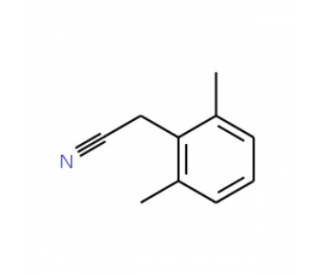詳細說明
Purity
>95%, by SDS-PAGE under reducing conditions and visualized by Colloidal Coomassie? Blue stain at 5 μg per lane
Endotoxin Level
<1.0 EU per 1 μg of the protein by the LAL method.
Activity
Measured by its ability to sulfurylate ATP. The specific activity is >2,500 pmol/min/μg, as measured under the described conditions. See Activity Assay Protocol on www.RnDSystems.com
Source
E. coli-derived Pro2-Phe511, with N-terminal Met and 6-His tag
Accession #
N-terminal Sequence
AnalysisMet
Predicted Molecular Mass
59 kDa
SDS-PAGE
57-58 kDa, reducing conditions
7175-AS |
| |
Formulation Supplied as a 0.2 μm filtered solution in Tris, NaCl, Glycerol and DTT. | ||
Shipping The product is shipped with dry ice or equivalent. Upon receipt, store it immediately at the temperature recommended below. | ||
Stability & Storage: Use a manual defrost freezer and avoid repeated freeze-thaw cycles.
|
Assay Procedure
Materials
Assay Buffer: 25 mM Tris, 1 mM MgCl2, 20 mM Na2SO4, pH 8.0
Recombinant Yeast ATP Sulfurylase/MET3 (ryMET3) (Catalog # 7175-AS)
Recombinant Human Inorganic Pyrophosphatase/PPA1 (rhPPA1) (Catalog # )
Recombinant Penicillum chrysogenum APS Kinase/APSK (rAPS Kinase) (Catalog # )
Adenosine Triphosphate (ATP) (Sigma, Catalog # A7699), 10 mM stock in deionized water
Malachite Green Phosphate Detection Kit (Catalog # )
96-well Clear Plate (Costar, Catalog # 92592)
Plate Reader (Model: SpectraMax Plus by Molecular Devices) or equivalent
Dilute ATP to 1.8 mM in Assay Buffer.
Dilute rhPPA1 to 3 μg/mL in Assay Buffer.
Dilute rAPS Kinase to 120 μg/mL in Assay Buffer.
Prepare Reaction Mixture by combining equal volumes of 1.8 mM ATP, 3 μg/mL rhPPA1, and 120 μg/mL rAPS Kinase.
Dilute ryMET3 to 0.2 μg/mL in Assay Buffer.
Dilute 1 M Phosphate Standard by adding 10 μL of the 1 M Phosphate Standard to 990 μL of deionized water for a 10 mM stock. Continue by adding 10 μL of the 10 mM Phosphate stock to 990 μL of Assay Buffer for a 100 μM stock. This is the first point of the standard curve.
Continue standard curve by performing six one-half serial dilutions of the 100 μM Phosphate stock in Assay Buffer. The standard curve has a range of 0.078 to 5.0 nmol per well.
Load 50 μL of each dilution of the standard curve into a plate. Include a curve blank containing 50 μL of Assay Buffer.
Load 25 μL of the 0.2 μg/mL ryMET3 into the plate. Include a Control containing 25 μL of Assay Buffer.
Start the reaction by adding 25 μL of Reaction Mixture to the wells, excluding the standard curve and curve blank.
Cover the plate with parafilm or a plate sealer and incubate at 37 °C for 20 minutes.
Add 30 μL of the Malachite Green Reagent A to all wells.
Add 100 μL of deionized water to all wells. Mix briefly.
Add 30 μL of the Malachite Green Reagent B to all wells. Mix and incubate for 20 minutes at room temperature.
Read plate at 620 nm (absorbance) in endpoint mode.
Calculate specific activity:
Specific Activity (pmol/min/μg) = | Phosphate released* (nmol) x (1000 pmol/nmol) | ÷ 2** |
| Incubation time (min) x amount of enzyme (μg) |
*Derived from the phosphate standard curve using linear or 4-parameter fitting and adjusted for Control.
**Two inorganic phosphates are generated from each MET3 produced pyrophosphate
Per Reaction:
ryMET3: 0.005 μg
ATP: 0.3 mM
rhPPA1: 0.025 μg
rAPS Kinase: 1 μg
Background: ATP-Sulfurylase/MET3
Sulfur metabolism is essential to all organisms. Inorganic sulfate is sequentially activated by ATP Sulfurylase and adenosine 5′-phosphosulfate kinase (APSK). ATP Sulfurylase converts ATP to adenosine-5'-phosphosulfate (APS) and generates pyrophosphate (1). APSK subsequently phosphorylates APS at the 3’ site to generate 3'?phosphoadenosine-5'-phosphosulfate (PAPS) (2). PAPS is the sulfur donor required for all sulfotransferase reactions in humans and is also the sulfur source for synthesis of cysteine, methionine and glutathione (3). The ATP Sulfurylase reaction is highly unfavorable energetically with the standard free-energy change of approximately +46 kJ/mol (4). To drive the reaction forward, APSK and pyrophosphatase are generally added into the reaction simultaneously to remove the products. The recombinant S. cerevisiae ATP Sulfurylase can be used for in vitro PAPS synthesis (5, 6).
References:
Robbins, P. W. and Lipmann, F. (1958) J. Biol. Chem. 233:686.
MacRae, I.J. et al. (1998) J. Biol. Chem. 273:28583.
Strott, C.A. (2002) Endocr. Rev. 23:703.
Hawes, C.S. and Nicholas, D.J.D. (1973) Biochem. J. 133: 541.
Wu, Z.L. et al. (2002) The FASEB J. 16:539.
Lin, C.H. et al. (1995) J. Am.Chem. Soc. 117:8031.
Entrez Gene IDs:
853466 (Yeast)
Alternate Names:
ATPSulfurylase; ATP-Sulfurylase; MET3











 粵公網安備44196802000105號
粵公網安備44196802000105號